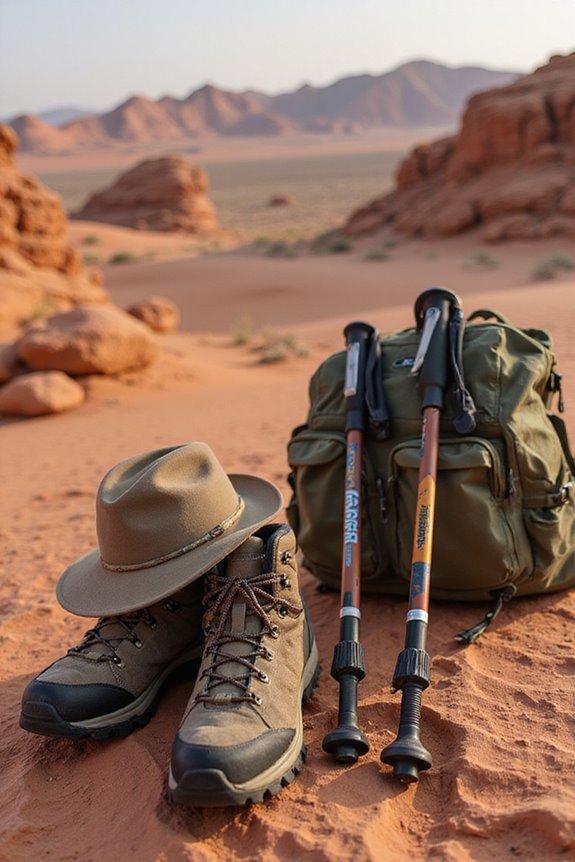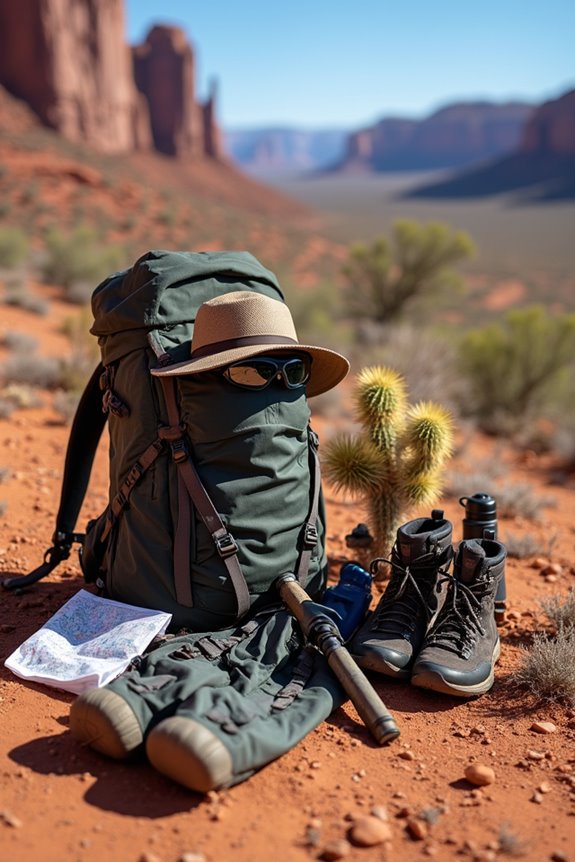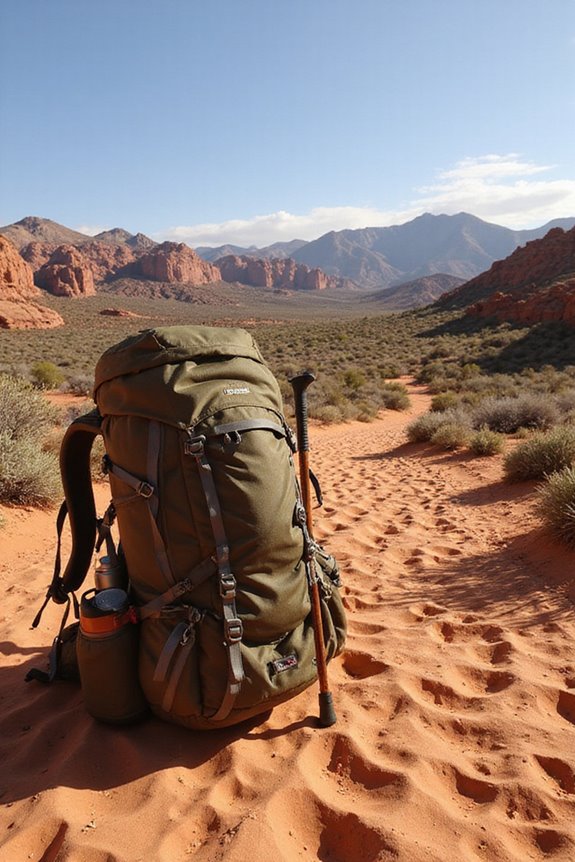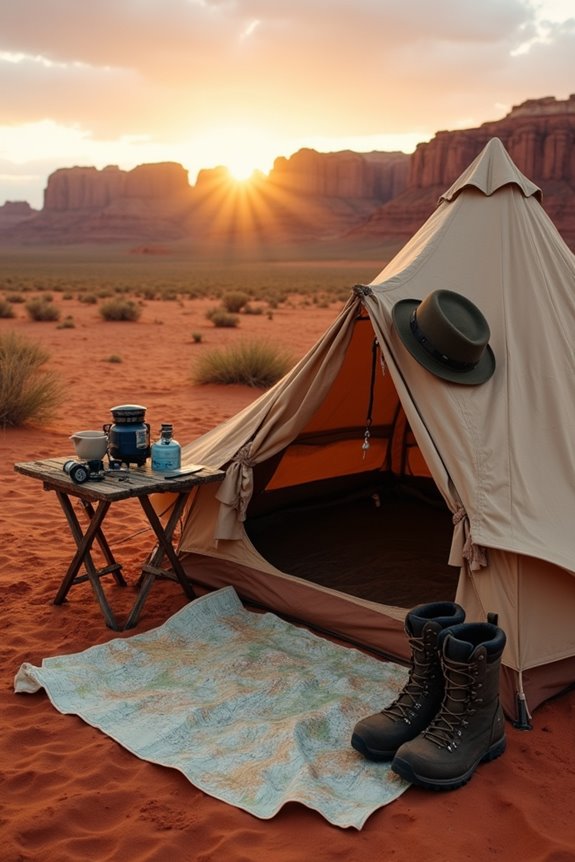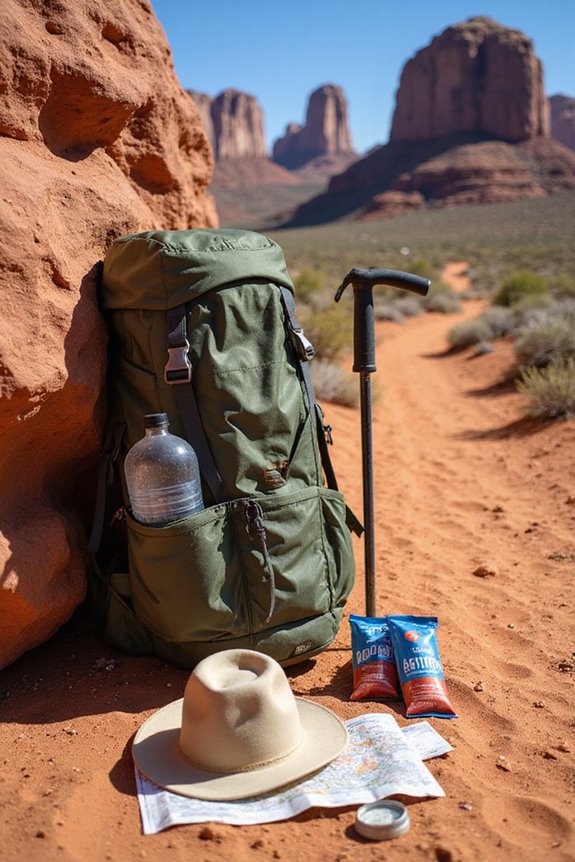When we choose desert hiking, hydration is key—aim for a liter of water per hour! We should wear breathable clothing, like moisture-wicking fabrics, and sturdy footwear for traction. Steering with a map and compass is essential, especially when trails get tricky. Timing our hikes in the cooler months and preparing for chilly nights keeps us comfortable. And let’s not forget those emergency kits! Trust me, keeping these tips in mind makes every adventure unforgettable. There’s even more to explore!
Key Takeaways
- Choose breathable, moisture-wicking clothing and sturdy footwear to ensure comfort and protection in the desert environment.
- Hydrate consistently by aiming for 1 liter of water per hour, carrying extra for tough terrains.
- Utilize a topographic map and compass skills to navigate trails confidently and safely.
- Plan your hikes for cooler months and times of day to avoid extreme heat and stay comfortable.
- Prepare for emergencies by packing a first aid kit, signaling tools, extra water, and thermal blankets.
Understanding Hydration Needs
When we hit the trails in the desert, hydration isn’t just a nice-to-have—it’s a must! We can’t just wing it and hope for the best. Each of us has unique hydration needs, so it’s essential we figure out our individual variations. Our general rule is to aim for about 1 liter of water per hour while hiking in those hot, dry conditions. We should carry extra, especially if we’re tackling tough terrain or hauling a pack. Staying aware of our exertion level helps us sip consistently instead of chugging wildly like a deer in headlights. Remember, proper hydration strategies keep us feeling free, energized, and ready to explore every inch of that breathtaking landscape without missing a beat! Additionally, choosing the right hiking water bottle can enhance our hydration experience by ensuring we have easy access to clean water during our adventures.
Selecting Appropriate Clothing and Footwear
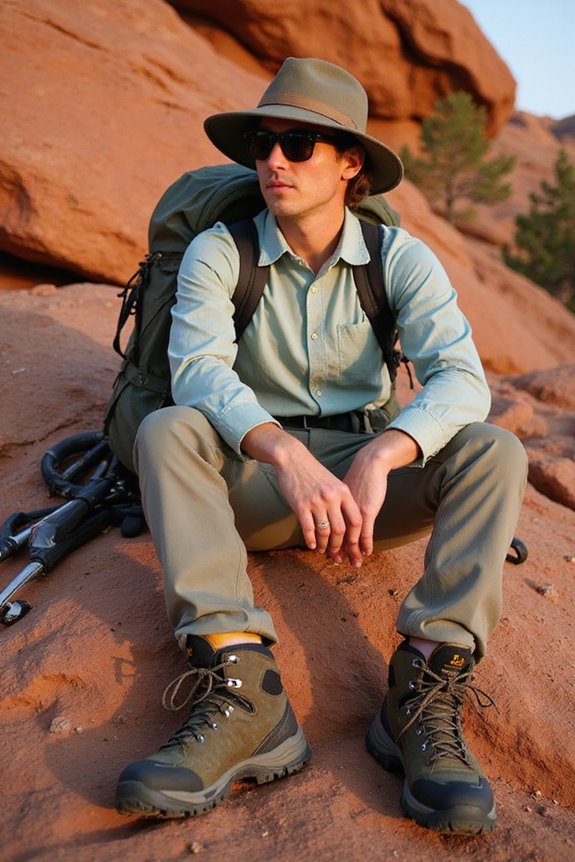
Hydration sets the stage for a fantastic day in the desert, but let’s not forget that what we wear plays a starring role too! We want to rock breathable, moisture-wicking fabric types like polyester or nylon. Skip the cotton; it gets heavy and clings like bad memories! Opt for long-sleeved shirts and lightweight convertible pants—they keep the sun at bay while letting air flow freely. A broad-brimmed hat with UPF protection? Yes, please! Our feet deserve comfortable, sturdy footwear that hugs our ankles and breathes without suffocating. Think durable soles for traction on rocky trails, plus moisture-wicking socks to keep blisters at bay. With the right clothing features, we can strut our stuff under the desert sun like pros! Additionally, selecting desert hiking boots that provide excellent traction and support is crucial for navigating challenging terrains.
Navigating Trails Safely

How do we guarantee we’re hiking safely through the stunning, yet rugged, desert landscape? First, we need to embrace our trusty topographic map and learn a bit about map interpretation. Those contour lines show us what’s ahead—hills, valleys, and those nasty steep drops! Plus, keeping an eye on prominent landmarks while we hike helps confirm we’re on track.
Now, let’s not forget our compass skills! In a landscape where the trails can fade away, a compass becomes our best friend. Taking bearings and triangulating our position with visible landmarks keeps us confidently moving forward. So, let’s revel in the freedom of the open trail, armed with maps and compasses, ready for whatever desert adventures come our way!
Considering Weather and Timing
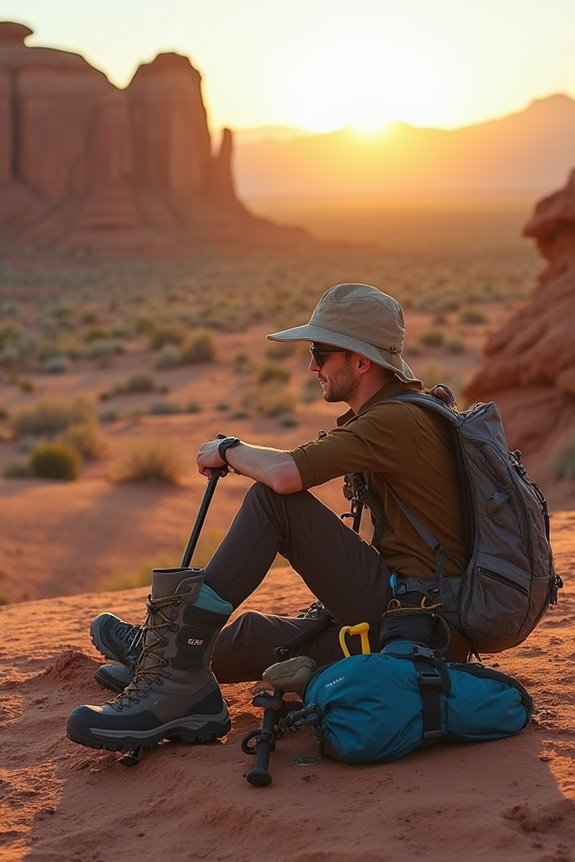
We’ve all felt the thrill of planning an epic desert hike—the wide-open horizons and endless possibility beckon us! To truly enjoy this freedom, we must consider seasonal variations. Hiking in summer? That’s a recipe for sun-baked misery, with temps soaring from 80°F to a blazing 115°F. Instead, let’s aim for fall, winter, or spring when we’re greeted by lovely highs around 60-75°F.
Timing’s essential too; let’s hit those trails early or late to dodge peak heat and store our energy. Remember, desert nights can turn chilly! With smart temperature management, we can conquer the desert while celebrating nature. So, pack those layers, check the forecast, and let the adventure begin!
Preparing for Emergencies and Equipment Needs
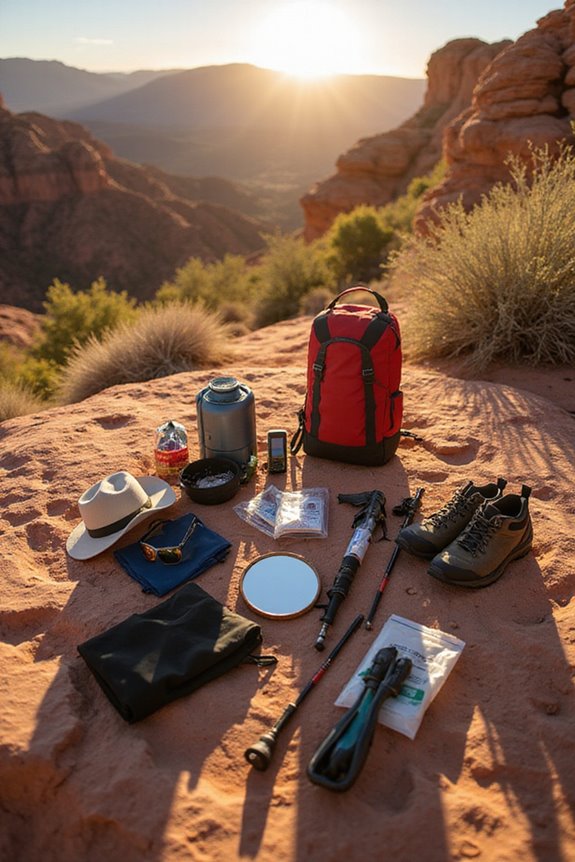
As we get ready for our desert adventure, it’s not just about soaking up the sun and enjoying the stunning views; we’ve got to think smart and be ready for anything! A thorough first aid kit is a must. We’ll need adhesive bandages, antiseptic wipes, and even snakebite kits—better safe than sorry!
Let’s not forget our emergency signaling tools—whistles and signal mirrors can be lifesavers. Packing extra water and electrolytes is just common sense, right? And hey, a good fire starter is our best friend for warmth and cooking, plus it’ll help us signal if we’re in trouble. Additionally, including emergency thermal blankets in our gear can provide essential warmth in unexpected weather conditions.
Frequently Asked Questions
What Are the Best Desert Hiking Trails for Beginners?
When exploring beginner trails, we recommend prioritizing hiking essentials like hydration and sun protection. The Golden Canyon and Bright Angel Trail await us, promising breathtaking scenery while offering a manageable experience for all adventurers.
How Can I Identify Desert Wildlife During Hikes?
As we wander through the desert, let’s keep our eyes peeled for wildlife signs and animal tracks. Each footprint tells a story, inviting us to connect with nature’s freedom and wonder.
Are There Specific Hiking Permits Required in Desert Areas?
When exploring desert areas, we need to be mindful of hiking regulations. Depending on our chosen trails, different permit types may be required, especially for backcountry camping. Let’s plan ahead to enjoy our adventure responsibly!
What Should I Do if I Encounter a Snake?
When we encounter a snake, let’s remember that freedom and caution can coexist. We should stay calm, respect its behavior, and prioritize safety precautions, like moving away slowly and avoiding sudden movements.
How Can I Protect My Phone From Desert Heat?
To protect our phones from desert heat, let’s prioritize phone insulation and heat resistance. We can use reflective cases, keep devices in shaded areas, and limit usage during peak sun hours to maintain their functionality.

